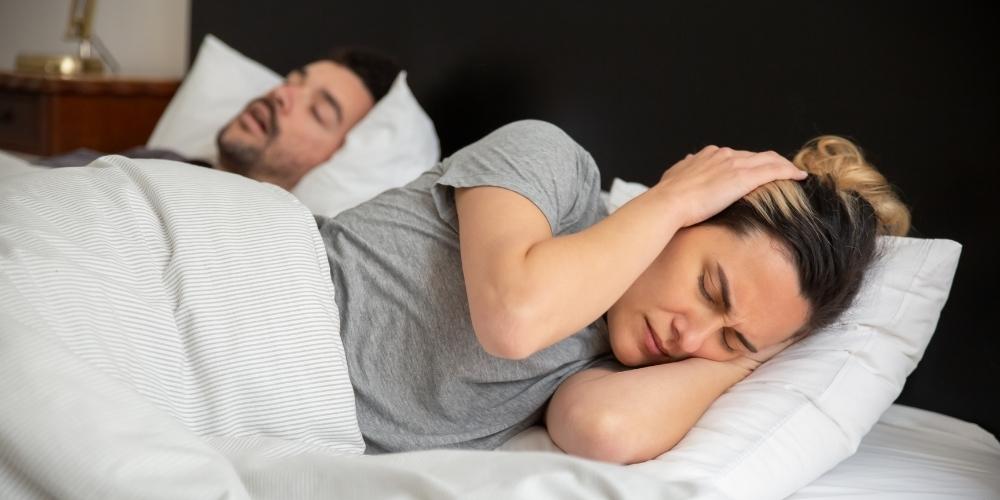Snoring is a noise caused by a narrow airway. Often considered a social problem, snoring becomes a serious disease that puts a person's life at risk when it reaches severe levels. Sleep apnea, on the other hand, is the inability to breathe that occurs due to snoring and develops due to obstruction of the airway. If the necessary precautions are not taken and the snoring problem is ignored, sleep apnea can turn into a serious life-threatening problem.

What is Sleep Apnea?
Sleep apnea is a pause in breathing during sleep. This pause is caused by the relaxation of the muscles that keep the upper airways open during sleep and the obstruction of the airway by the tongue root, palate or tonsils. In this problem, which is observed with snoring, the person is breathless for at least 10 seconds and the airway reopens as a result of the brain being stimulated with excessive effort.
The following signs and symptoms can be useful in identifying the illness state of sleep apnea because most people with this problem are unaware of it:
- Headache
- Insomnia during the day
- Memory issues
- Aggresiveness and stress
- Lack of concentration
- Snoring
- Dry mouth
- Sore throat
- Heart rhythm problems
- High blood pressure
What Causes Sleep Apnea?
Central, obstructive, and mixed sleep apnea are the three distinct forms. Depending on the type, different factors contribute to the condition.
- Central (central) sleep apnea is caused by problems in the breathing command in the brain.
- Obstructive sleep apnea is caused by an obstruction in the upper respiratory tract. In most cases, overgrown tonsils, excess weight, or soft vessel prolapse cause the airway to become blocked. This type of sleep apnea is more common in men and occurs in women as a result of hormonal changes during menopause.
- Mixed sleep apnea is when both conditions are present.
Sleep Apnea Diagnosis and Treatment Methods
In the case of sleep apnea, a physical examination is carried out, and the patient's medical history is taken into consideration, but the use of various sleep study methodologies ultimately leads to the diagnosis of the disorder.
For this purpose, the person is subjected to a sleep test called "polysomnographic examination". During this study, which is carried out in a sleep laboratory, brain activity during sleep, sleep structure and existing disorders are detected. As a result of the detailed evaluation, the level of the disease and how it will be treated are determined.
Sleep apnea treatment varies according to the type and severity of apnea and the structure of the airways. One of the most common methods is the use of pressurized air with an air machine called CPAP. The device is used during sleep and keeps the airway open with the help of a mask.
One of the conditions affecting sleep apnea is being overweight, so getting back to the ideal weight by adopting healthy lifestyle habits can help alleviate the severity of apnea. Recommendations to improve symptoms include:
- Stop smoking and drinking alcohol
- Maintaining a healthy weight;
- Exercising regularly
- Avoiding heavy meals before bed
- Sleeping on your side
Sometimes, in order to prevent obstruction problems, procedures such as removing the adenoid, pushing the lower jaw forward, and rearranging the throat structure may be preferred. However, the treatment process is planned under the supervision of a physician and is handled specifically for the person's problem.
 Language
Language
 Turkish
Turkish
Recent Comments